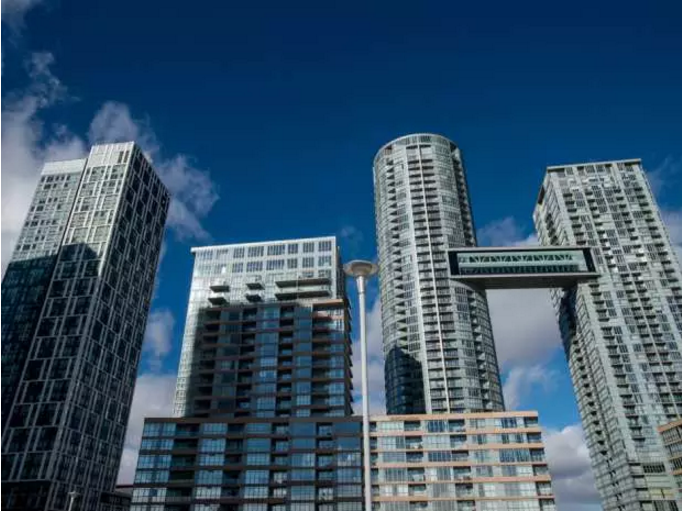In toronto real estate, Canada Mortgage and Housing Corp. says that there is very limited speculation in the condominium industry in Toronto among builders, a situation unlike the 1980s when the market crashed.
In a report out Tuesday, CMHC, the Crown corporation that guides Ottawa on housing policy, noted that 79 per cent of projects had reached pre-construction sales of 70 per cent. That level is considered key for bank financing and a guarantee that a project will come close to breaking even.
In toronto real estate, “Condo building activity in Toronto seems to be well managed. In spite of this encouraging information, future inventory management will be critical,” said Dana Senagama principal, market analysis, with CMHC.
CMHC does caution that there is larger pockets of unsold inventory in Toronto Centre and Markham. Projects going forward below the 70 per cent threshold tend to be small developments or larger developments adding new phases.
The situation is unlike the 1980s housing bubble which CMHC says was arguably fueled by major speculation investments in the condo apartment market.
“More buyers entered the market hoping to make quick profits triggering an artificial increase in demand. Subsequently fewer homes became available for sale, leading to further price growth. In response, developers provided more supply by building condominium apartments,” CMHC said, in its report.
A sudden shift in interest rates is generally credited with helping to crash the housing market, leaving those exposed with property unable to meet mortgage payments and defaulting as available buyers dried up in the high-credit environment.
CMHC suggests last time around anecdotal evidence suggest builders were going ahead with projects with low pre-construction levels.
As snapshot of the market, the Crown corporation says in the first quarter of 2016, 43,860 units were under construction in the Toronto area while only 1,373 units were completed and unsold.
CMHC says the current unsold inventory is concentrated in 10 per cent of projects which account for 40 per cent of the unsold inventory in the market. Among the remaining 90 per cent of projects, the average unabsorbed units is just four per cent.
“In general, our research shows that the majority of builders wait until a higher sales threshold is reached prior to commencing construction thus mitigating risks associated with speculative building. A tight resale condo market and strong rental demand have helped to absorb some of the completed and unsold units with less chances of forming a condo bubble,” the reports states. “The current inventory level is low compared to the highs witnessed during the early 1990s and has eased from a slight increase in 2015.”


Leave a Reply